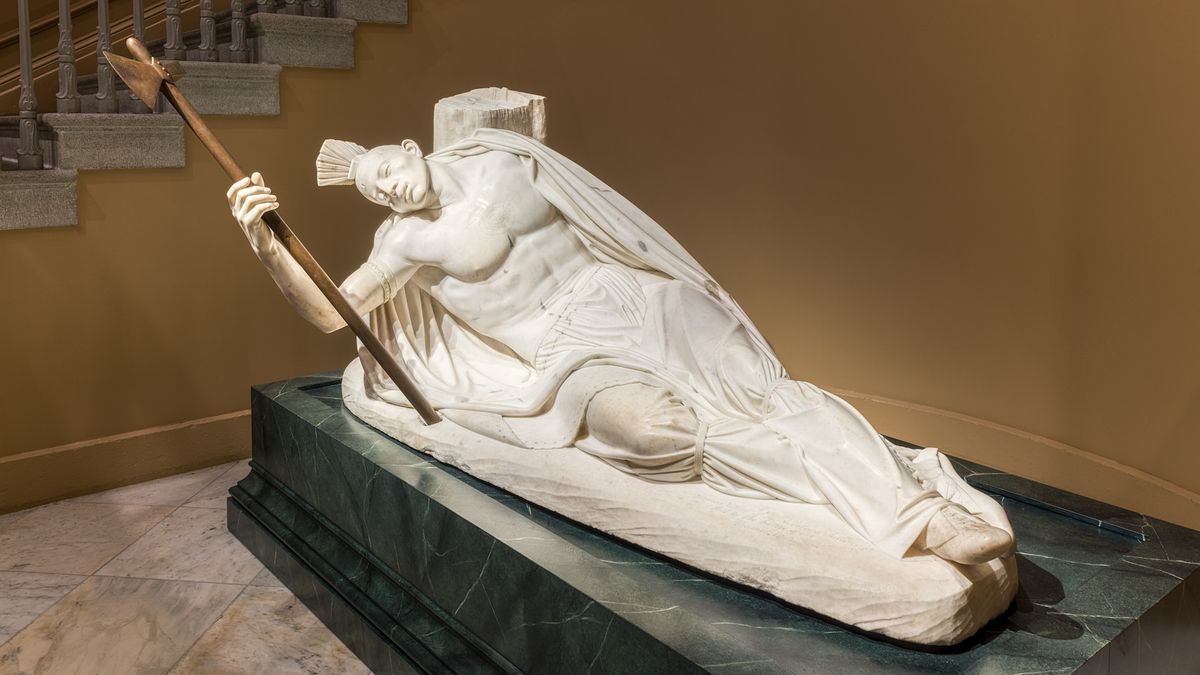Is it the horse’s turn to render the car obsolete?
Japanese robotics company Kawasaki Heavy Industries is charging into the future — while leaning on an ancient mode of transport.
Meet Corleo, a hydrogen-powered robo-stallion that people can ride — or will be able to, once he or she hits the market.
The cybernetic steed “is a completely new means of transportation that combines Kawasaki’s motorcycle and robotics technologies,” tech firm’s executive officer Takashi Torii said.
Unveiled Saturday at the Osaka Kansai Expo on April 4, the cutting-edge quadruped is still in the conceptual phase of development, the Daily Mail reported.
But that didn’t stop the creators from releasing an epic computer-generated promotional video — showing off some of the envisioned capabilities of this self-operating Seabiscuit, which can hold up two riders.
In it, Corleo can be seen cantering across a pastoral snowscape, navigating rocky cliffs, leaping over crevasses, fording streams, and even weaving through trees like an animatronic antelope.
As depicted on camera, the computerized creature will be able to carry people across any terrain — thanks to inward-facing knees and goat-like, two-toed cloven hooves made of rubber, which is “slip-resistant” and able to absorb “surface irregularities,” per the company.
“These hooves can adapt to various terrains, including grasslands, rocky areas, and rubble fields,” they write. “Meanwhile, the rear leg unit can swing up and down independently from the front leg unit, allowing it to absorb shocks during walking and running.”
These make it the perfect all-terrain alternative to the motorcycle — for which Kawasaki is perhaps best known.
To further enhance the robo-ride, Kawasaki proposes that Corleo be outfitted with artificial intelligence that improves its balance and coordination.
Much like a real-life draft animal, the Termi-neigh-tor responds to the body movements of the rider and adjusts to center of gravity shifts in real-time — thereby lessening the chances that the jockey will get bucked off mid-ride.
Corleo will also come equipped with a motorcycle-esque dashboard display featuring crucial information from weight distribution to hydrogen levels.
At night, the motherboard “supports optimal riding by projecting markers onto the road surface to indicate the path ahead,” Kawasaki representatives added.
As for the horsepower, Corleo is fueled by a 150cc engine that takes hydrogen from tanks in the rear to generate electricity for each of the legs’ drive systems, the Daily Mail reported.
These are easily refueled using hydrogen gas and the only emission is water, meaning they effectively produce less waste than an actual horse. The speed, range, and battery life have yet to be announced, however.
Unfortunately, wannabe riders will need to rein in their tech-spectations.
Kawasaki has yet to devise a development timeline or plans for commercialization — although they suggest Robo-Colt could debut in the far-off year of 2050.
Like a pony lover with a hobby horse, Corleo hopefuls will have to tide themselves over in the interim with a display mockup, which be featured at the Osaka-Kansai Expo — running from April 13 until October 13 in Osaka, Japan.














